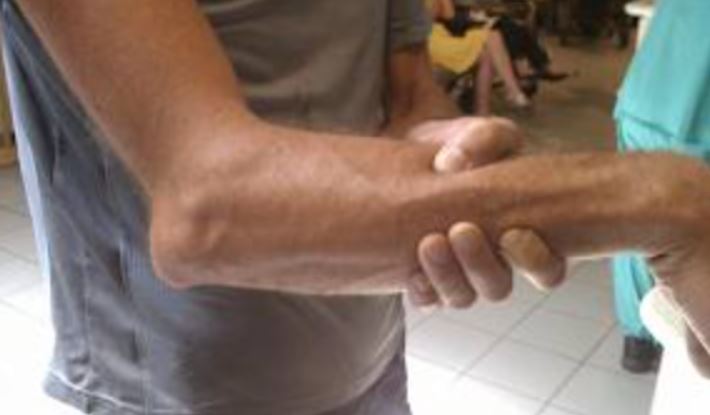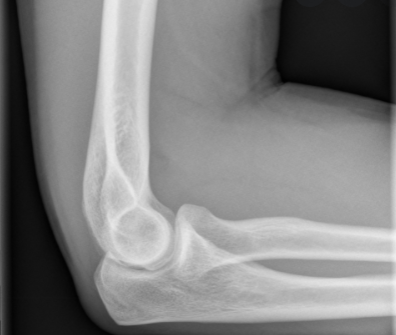Elbow Dislocation
What is an Elbow Dislocation?
An elbow dislocation is when the forearm bones (radius and ulna) jump away from the arm bone (humerus) (see pictures).
What causes an Elbow Dislocation?
The main cause of elbow dislocations is trauma such as from a fall or in sports.
What are the symptoms of an Elbow Dislocation?
A dislocated elbow will look different (see picture) and will not work well. It will hurt.
How can you tell if you have an Elbow Dislocation?
A physical exam by the doctor is usually. X-rays are needed. An MRI is usually not needed.
How is an Elbow Dislocation treated?
Sometimes a dislocated elbow will go back into place on its own. When this happens the person will usually feel the elbow move, clunk or shift. Afterwards, the person usually has less pain.
If the elbow does not go into place on its own then the person will need to have it put back in place by a doctor: usually in the emergency room.
After the elbow is put back in place the elbow is placed in a locked-elbow-immobilizer with the elbow/arm at 90 degrees but allowing full flexion. The elbow is kept at 90 degrees for 2 weeks.
After 2 weeks the elbow range-of-motion is checked. If the elbow is stiff and doesn’t move much then the range-of-motion is increased. If the elbow is loose and moves a lot then the brace is kept at 90 degrees. This happens every week until the 6 week mark. At this point the brace is removed, and elbow strengthening begins, which consists of a light weight, high repetition strengthening program.
After an elbow dislocation, surgery is usually not needed if the above program is followed. If it is not followed, then the elbow will either become too stiff or too loose depending on what was done. If this happens surgery is usually needed.

Dislocated elbow

Dislocated elbow
